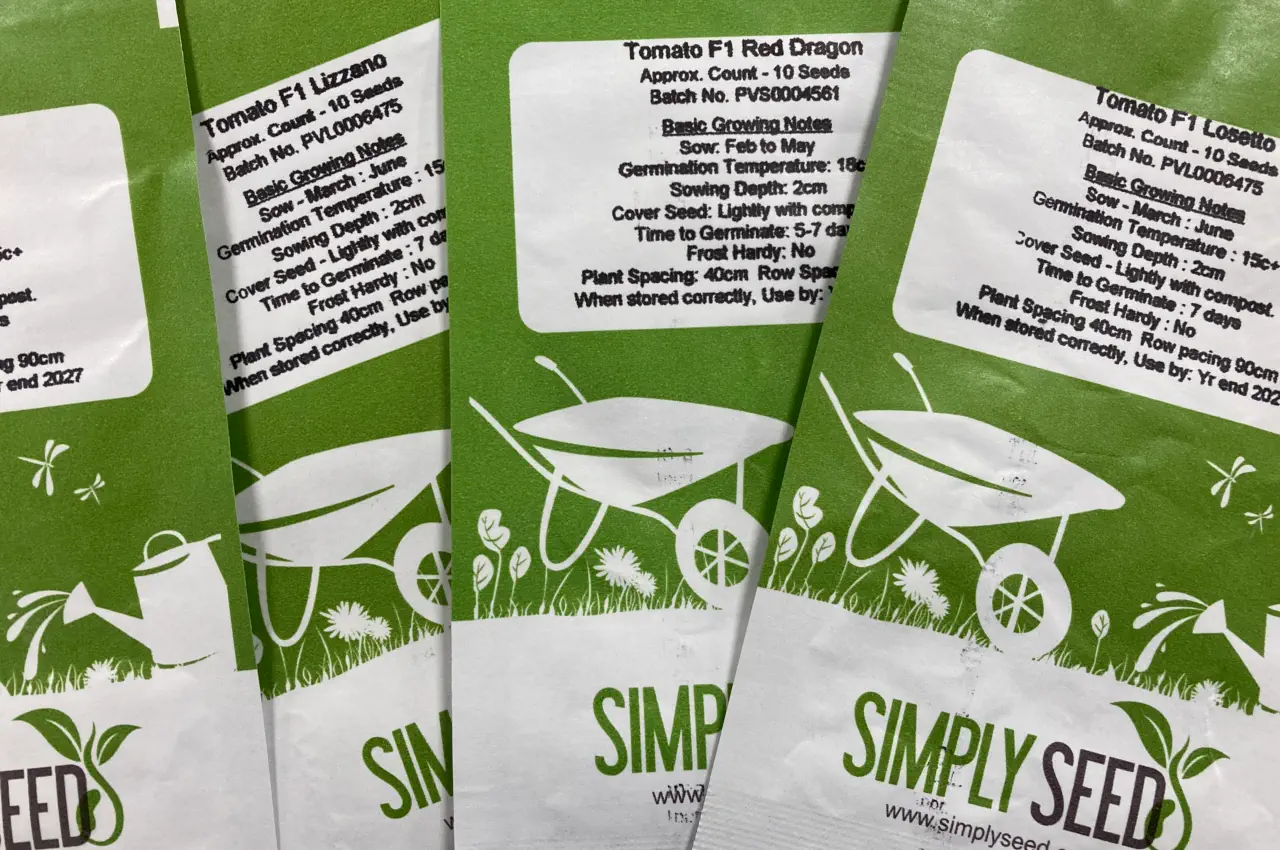Pak Choi is grown for its tasty leaves which are superb when added to stir fries and salads.
The taste is similar to that of mild cabbage and spinach and is a popular addition to many oriental dishes.

You can be forgiven for thinking that the term ‘F1’ is more likely to be associated with Formula One international motor racing than anything related to plant seeds. In fact the genetic term F1, is sometimes known by the term ‘Filial 1’, when referring to plants and seeds.
It simply means First Generation or ‘first children’, and in gardening terms it refers to a First Generation plant hybrid. F1 hybrids are the result of successful cross pollination between 2 parent plants, each of which will have some desirable characteristics.
For example, a typical annual flowering plant such as a petunia variety might have strong, healthy and uniform growth properties, while another dwarf variety might display an abundance of flowers with a specific colour range. By cross-breeding the 2 varieties, the result could be a short, compact plant with large and very colourful flowers. Plant breeders will select certain plants for their beneficial features and cross-breed them until they end up with a new variety that will best serve its purpose, whatever that might be.
This type of plant breeding by humans has been practised since the 19th century, or at least it was first documented then. The work was carried out by an Augustinian monk named Gregor Mendel. He famously bred and cross-bred sweet pea plants to produce new varieties, each of which displayed unique features. Some of these genetic properties resembled the parent plants but others were visibly different. It is thought that Mendel’s experimental work was the precursor to the field of plant genetics that we know and understand today.
The cross-breeding of plants is not really an invention as such, it’s more of an acceleration of nature’s own work. In the wild, many types of plants have naturally crossed to produce sub-species and new varieties. It’s nature’s way of helping plants adapt and survive within their given or changing environments. It’s also a reason why there are so many different types of plants and yet many of them are genetically related in some way. The intervention and experimentation by humans adds an element of control within the hybridisation process.
Plant breeders will collect the seeds from each of the new varieties they have bred and then grow them on in order to document the new plant’s desirable habits, appearances and benefits. This whole process might take several attempts until the objectives have been achieved. Only then will the new F1 variety be made available to the seed merchant and then eventually, the grower or gardener. It’s important to the breeder to achieve a standard of uniform growth and quality of either flowers or fruits. Another important feature that many breeders will try to attain is disease resistance, pest resistance or both.
Are F1 seeds therefore better than their old, traditional counterparts? Although that is the end game, there will always be those growers who prefer not to meddle with nature, regardless. However, the benefits of F1 varieties are usually quite obvious and there are definitely occasions when F1s will out-perform the old tried and trusted varieties of flowering plants and fruit and vegetables. Bolt resistant cultivars are a fine example.
Some of the most desirable features of annual and some biennial flowering plants might include a profusion of flower production over a long period. Also, the depth and vibrancy of their colours, including the foliage could be a desired aspect. Drought resistance and uniformity of size and growth habit are popular features too, alongside hardiness and resistance to slugs and snails. With fruit and vegetables there is the inevitable commercial aspect, which is probably the number one ‘driver’ for F1 seed production around the world.
Supermarkets want uniformity in fruit and vegetables because they assume that’s what their customers want. In that respect, each fruit and vegetable, which is displayed on the supermarket shelves has to fall within certain parameters. The grower will therefore look to the plant breeder to produce seeds from two inbred lines that will satisfy this market demand. On the other hand, the amateur grower or gardener is more often simply looking for seeds that will produce quality, high-yielding plants that are easy to grow and look after.
All this breeding, testing and trial activity comes at a cost. F1 seeds are therefore more expensive than those from standard plant stocks and seed saved from F1s are also unlikely to produce plants that are true to type. It has to be said though that the benefits more than justify the extra expense and inconvenience. If larger, healthier and higher quality crops are required then the additional cost of seed is wholly justified. Other costs relating to the production of fruits and vegetables is likely to be unaffected and so it makes good sense economically to select F1 varieties where they are offered and available.
All blog content on this page is copyright of SimplySeed and is not to be reproduced without prior written permission. ©